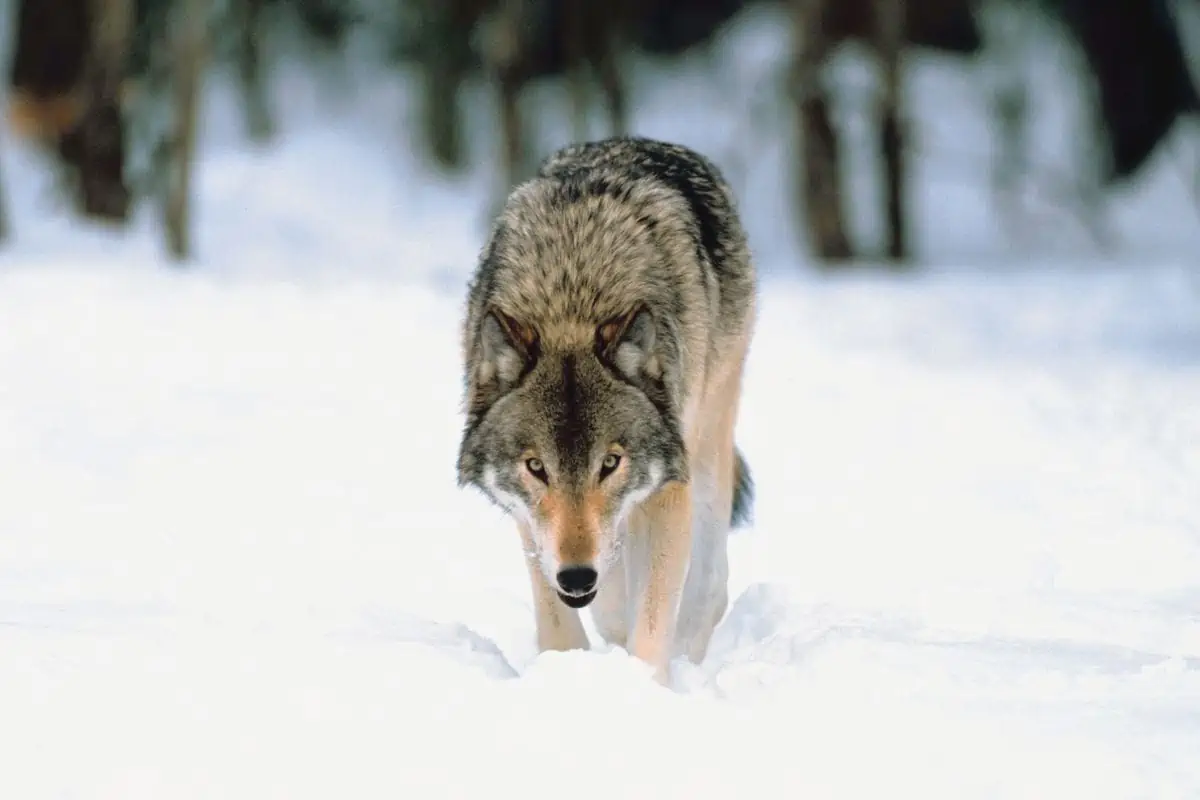Gray wolves, known scientifically as Canis lupus, are well-known for their hunting prowess and carnivorous diet. They primarily prey on large hoofed mammals such as deer, elk, bison, and moose.
These animals form the core of their diet, providing the necessary nutrients and energy to sustain their active lifestyle. The hunting tactics of gray wolves are particularly fascinating as they often work in packs to bring down these large animals, showcasing their social structure and coordination.
Jump links:

Prey Selection Includes Small Mammals and Opportunistic Feeding
In addition to large mammals, gray wolves have a diverse palate, including smaller mammals such as beavers, rodents, and hares. This varied diet is crucial for their survival, especially when larger prey is scarce.
Their ability to switch to smaller prey demonstrates their adaptability in various environments.
Wolves are also known to be opportunistic feeders, consuming carrion and other available food sources when necessary.
Wolves Can Eat 20 Pounds in a Single Meal
An intriguing aspect of the gray wolf’s diet is their feasting capability. An adult gray wolf can consume up to 20 pounds of meat in a single meal.
This remarkable feeding behavior is essential for their survival, especially in harsh climates where food may not be consistently available.
After a successful hunt, wolves will gorge themselves, which helps them to endure periods without food.
Impact of Wolf Diet on Ecosystems
The diet of gray wolves has a significant impact on their ecosystems. As apex predators, their hunting habits play a crucial role in maintaining the balance of their environment.
By preying on their prey species’ weak and sick individuals, wolves contribute to the natural selection process, ensuring a healthier prey population.
Moreover, their feeding habits can influence the distribution and behavior of other wildlife, underlining the importance of wolves in the ecological community.
Adaptation to Different Habitats
Gray wolves inhabit various environments across the Northern Hemisphere, from the tundras to forests and mountains. Their diet varies depending on the local fauna, demonstrating their adaptability to different habitats.
In some regions, wolves may rely more heavily on a particular type of prey due to its abundance or ease of hunting.
This adaptability has been key to the survival and spread of gray wolves across various landscapes.
Final Thoughts
The diet of the gray wolf is a testament to their remarkable survival skills. Their ability to hunt various prey, from large hoofed mammals to small rodents, and impressive feasting capabilities highlight their adaptability and role as a key predator in their ecosystems. Understanding the diet of gray wolves provides insight into their behavior, social structure, and ecological impact on their natural habitats.
This article, focusing solely on the diet of gray wolves, provides a glimpse into the fascinating world of these majestic creatures.
Their dietary habits reveal their physical capabilities and underscore their importance in maintaining ecological balance.
